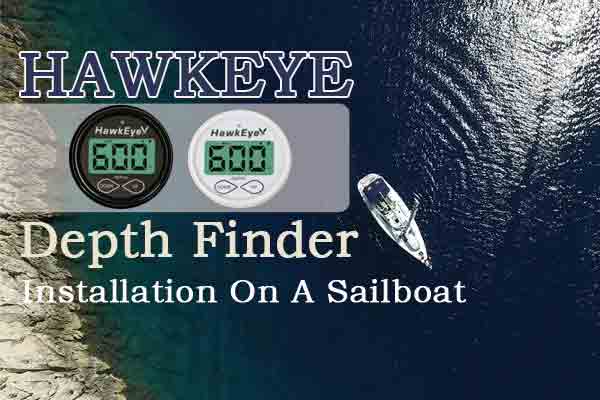
Introduction:
Installing a depth finder, also known as a depth sounder or fish finder, is a valuable addition to any sailboat. It provides crucial information about the water depth beneath the vessel, aiding navigation and ensuring safe passage. While the process may seem daunting, this comprehensive guide will walk you through the step-by-step installation of a depth finder in your sailboat. By following these instructions, you'll gain the necessary knowledge and confidence to undertake this project and enhance your sailing experience.
I. Understanding Depth Finders:
Before diving into the installation process, it's important to understand the basic principles of depth finders. These devices utilize sound waves to measure the distance between the boat's transducer and the bottom of the waterbody. The transducer emits sound waves that travel through the water and bounce back after hitting an object, which is typically the seabed. By measuring the time it takes for the sound waves to return, the depth finder calculates the water depth and displays it on a screen.
II. Gathering the Required Tools and Materials:
To begin the installation process, gather the necessary tools and materials. This typically includes a depth finder unit, a transducer, a mounting bracket, a power source (battery or connection to the boat's electrical system), appropriate cables, connectors, and a drill with various bits. Additionally, you may need sealants, waterproofing materials, and wire connectors, depending on your specific boat and the installation method chosen.
III. Selecting an Installation Method:
There are two common installation methods for depth finders: through-hull and transom mount. Through-hull installation requires drilling a hole through the boat's hull, while transom mount involves attaching the transducer to the exterior of the hull. The choice between the two methods depends on your boat's design, preferences, and requirements. Consider factors such as ease of installation, accuracy, and potential interference when selecting the installation method that suits your sailboat best.
IV. Preparing for Installation:
Before installing the depth finder, conduct thorough research and consult your boat's manufacturer or relevant experts to ensure a seamless installation process. Identify an ideal location for the depth finder unit, ensuring it is easily visible and accessible while sailing. Locate a suitable mounting spot for the transducer, considering factors such as water flow and interference. Carefully read the manufacturer's instructions to understand any specific requirements or precautions.
V. Installing the Depth Finder:
Mounting the depth finder unit:
Determine the ideal location for the unit, ensuring it is secure and protected from water exposure.
Use appropriate mounting brackets or hardware to securely attach the unit to a bulkhead or dashboard.
Route the necessary cables to connect the unit to the transducer and power source, ensuring proper cable management.
Installing the transducer:
For through-hull installation, carefully drill a hole in the boat's hull at the chosen location, following the manufacturer's guidelines.
Apply sealant around the hole and insert the transducer, ensuring a watertight seal.
Connect the transducer cables to the depth finder unit, routing them through appropriate channels or conduit for a clean and organized installation.
For transom mount installation, select an appropriate location on the exterior of the hull, ensuring it is below the waterline and away from any interference.
Use the mounting bracket provided by the manufacturer to securely attach the transducer to the transom.
Connect the transducer cables to the depth finder unit, routing them through the boat's hull or along the transom, protecting them from damage.
Powering the depth finder:
Connect the depth finder unit to a suitable power source, either a dedicated battery or the boat's electrical system, following the manufacturer's instructions.
Ensure the power connection is secure and protected against water intrusion.
VI. Testing and Calibration :
After completing the installation, thoroughly test the depth finder to ensure it is functioning correctly. Take the sailboat out for a sea trial and verify that the unit accurately displays the water depth. Make any necessary adjustments or calibrations as per the manufacturer's guidelines.
Conclusion:
Installing a depth finder in your sailboat is a rewarding project that enhances safety and navigation capabilities. By understanding the principles of depth finders, selecting the appropriate installation method, and following the step-by-step instructions provided in this guide, you can confidently undertake the installation process. Remember to prioritize safety, consult manufacturer guidelines, and seek professional assistance if needed. With a successfully installed depth finder, you'll gain valuable information about water depths, ensuring a more enjoyable and secure sailing experience.
